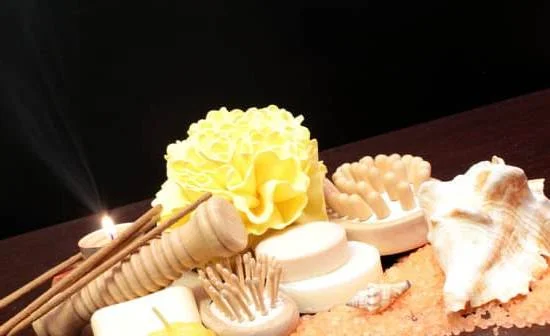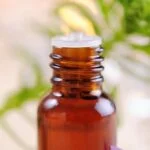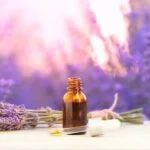Aromatherapy has been used for centuries as a natural way to promote health and well-being. One of the best ways to incorporate aromatherapy into your daily life is by growing an aromatherapy garden right in your own backyard. In this article, we will discuss how to grow an aromatherapy garden, from choosing the right location and selecting the best aromatic plants to harvesting and preserving aromatic herbs.
An aromatherapy garden is not only a beautiful addition to any outdoor space but also serves as a convenient source of fresh, fragrant herbs that can be used for a variety of purposes. From stress relief and relaxation to treating common ailments, the benefits of having an aromatherapy garden are numerous. By cultivating your own aromatic plants, you can harness the power of essential oils and natural scents to improve your overall well-being.
In this comprehensive guide, we will provide step-by-step instructions on how to create and maintain an aromatherapy garden that is both functional and visually appealing. Whether you are new to gardening or have some experience with growing herbs, this article will provide valuable insights on how to cultivate a thriving aromatherapy garden that you can enjoy year-round.
Choosing the Right Location for Your Aromatherapy Garden
When planning to grow an aromatherapy garden, choosing the right location is crucial for the success of your plants. The right amount of sunlight, soil quality, and proper drainage are all key factors in ensuring that your aromatic herbs thrive. Here are some tips on how to select the best location for your aromatherapy garden:
- Sunlight: Aromatherapy plants typically require at least 6 hours of sunlight per day. When choosing a location for your garden, look for an area that receives plenty of natural light throughout the day. Consider the position of buildings, trees, or any other structures that may block sunlight and choose a spot with adequate exposure.
- Soil Quality: Good soil quality is essential for the healthy growth of aromatic plants. Conduct a soil test to determine its pH level and nutrient content. Most aromatic herbs prefer well-draining, slightly acidic soil. If needed, amend your soil with organic matter such as compost or peat moss to improve its texture and fertility.
- Drainage: Proper drainage is vital to prevent waterlogged soil, which can lead to root rot and other water-related problems for your plants. Ensure that the chosen location for your aromatherapy garden allows excess water to flow away from the area easily. If necessary, consider incorporating raised beds or adding organic materials to improve drainage.
By carefully considering these factors when selecting a location for your aromatherapy garden, you can create an optimal environment for growing healthy and vibrant aromatic herbs.
In addition to these considerations, be sure to regularly monitor the sun exposure, soil moisture levels, and overall health of your plants as they grow. Adjustments may need to be made over time based on observations in order to maintain an ideal growing environment for your aromatherapy garden. Additionally, keeping an eye on potential issues such as pests and diseases will help ensure that your aromatic herbs continue to flourish.
Ultimately, choosing the right location for an aromatherapy garden involves careful planning and consideration of various environmental factors. By selecting a suitable spot with ample sunlight exposure, good soil quality, and proper drainage, you can set the stage for a thriving garden filled with fragrant and beneficial aromatic herbs.
Selecting the Best Aromatic Plants
When it comes to creating an aromatherapy garden, selecting the best aromatic plants is essential. These plants not only provide a visually pleasing and fragrant environment but also serve a practical purpose in aromatherapy practices. Here are some popular aromatic plants that are well-suited for an aromatherapy garden:
- Lavender: Known for its calming and soothing properties, lavender is a staple in aromatherapy. It can be used to promote relaxation, alleviate stress, and improve sleep quality.
- Rosemary: This aromatic herb has a refreshing and invigorating scent. It is often used in aromatherapy to enhance concentration, uplift mood, and relieve mental fatigue.
- Mint: With its crisp and refreshing fragrance, mint is commonly used to promote alertness, ease headaches, and soothe digestive issues. It is a versatile herb that can be incorporated into various aromatherapy blends.
These are just a few examples of aromatic plants that can thrive in an aromatherapy garden. When choosing plants for your garden, consider the specific scents and therapeutic properties that you want to incorporate into your aromatherapy practice.
In addition to these popular choices, other aromatic plants such as chamomile, lemon balm, and eucalyptus can also be valuable additions to an aromatherapy garden. Research each plant’s growth requirements and care instructions before incorporating them into your garden. By carefully selecting a variety of aromatic plants, you can create a diverse and enriching space for practicing aromatherapy techniques right in your backyard or outdoor space.
Preparing the Soil
After choosing the perfect location for your aromatherapy garden, the next crucial step is preparing the soil. The quality of your soil will directly impact the growth and vitality of your aromatic plants, so it’s essential to ensure that it is properly prepared before planting. Here are some step-by-step instructions on how to prepare the soil for your aromatic herbs.
First, begin by clearing the area of any debris, rocks, or weeds. It’s important to start with a clean slate to provide the best growing environment for your aromatic plants. Once the area is cleared, loosen the soil using a garden fork or tiller. This will help improve aeration and drainage, which are essential for healthy plant growth.
Next, it’s important to test the pH level of your soil. Most aromatic plants prefer slightly acidic soil with a pH level between 6.0 and 7.0. You can purchase a pH testing kit at a garden center or have your soil tested professionally. Based on the results, you may need to amend your soil with lime to raise the pH or elemental sulfur to lower it.
Finally, enrich the soil with organic matter such as compost or well-rotted manure. Organic matter improves soil structure and provides essential nutrients for your aromatic herbs. Work the organic matter into the soil thoroughly, ensuring that it is evenly distributed throughout the planting area.
| Soil Preparation Steps | Description |
|---|---|
| Clearing | Clear the area of any debris, rocks, or weeds. |
| Loosening | Loosen the soil using a garden fork or tiller to improve aeration and drainage. |
| pH Testing | Test the pH level of your soil and amend as needed. |
Planting and Caring for Aromatic Plants
When it comes to planting an aromatherapy garden, it’s essential to start with healthy plants. Look for sturdy young plants with vibrant leaves and strong stems. Consider purchasing starter plants from a local nursery rather than starting from seed to ensure a successful beginning to your garden.
Choosing the Right Location
Before planting, it’s crucial to assess the sunlight, soil quality, and drainage of the chosen location for your garden. Most aromatic plants thrive in well-drained soil and plenty of sunlight. It’s also important to consider the environmental conditions of your region and choose aromatic plants that are suitable for your climate.
Planting and Watering
When it comes time to plant your aromatic herbs, be sure to space them according to their specific needs. Generally, most aromatic plants should be planted at least 12 inches apart to allow for adequate air circulation and growth space. After planting, water your herbs thoroughly but be mindful not to overwater, as this can lead to root rot.
Maintaining Your Aromatic Plants
Regular maintenance is essential for the health and vitality of your aromatherapy garden. This includes keeping an eye out for pests and diseases that can impact your aromatic plants. Consider using natural pest control methods to protect your herbs without harming beneficial insects or the environment.
By understanding how to grow an aromatherapy garden properly and care for its contents, you can create a beautiful outdoor space filled with fragrant and beneficial herbs that promote health and well-being.
Utilizing Companion Planting
Companion planting is a gardening technique where different plants are grown in close proximity to each other to benefit one another in some way. In the case of an aromatherapy garden, companion planting can be used to enhance the growth, health, and fragrance of aromatic plants. For example, planting lavender alongside rosemary can help repel pests that may otherwise damage these fragrant herbs. Similarly, growing mint near chamomile can encourage better overall growth and flavor in both plants.
When planning your aromatherapy garden, consider incorporating companion planting to create a more sustainable and thriving ecosystem for your aromatic herbs. Be sure to research which plants work well together and which ones do not, as some combinations may actually inhibit each other’s growth. By strategically placing your aromatic plants alongside their beneficial companions, you can create a beautiful and harmonious garden that yields high-quality herbs for your aromatherapy needs.
In addition to promoting plant health and growth, companion planting can also attract beneficial insects such as bees and butterflies to your garden. These pollinators play a crucial role in the reproductive cycle of many aromatic plants and help ensure a bountiful harvest. By including flowers and herbs that are known for attracting pollinators, you can create a vibrant and buzzing ecosystem within your aromatherapy garden.
| Companion Planting Benefits | Attracting Pollinators |
|---|---|
| Enhances plant health and growth | Crucial role in reproductive cycle of aromatic plants |
| Repels pests that may otherwise damage fragrant herbs | Creates a vibrant and buzzing ecosystem within the garden |
Harvesting and Preserving Aromatic Herbs
When it comes to growing an aromatherapy garden, the ultimate goal is to be able to harvest and utilize the aromatic herbs for their therapeutic properties. Knowing when and how to harvest these herbs is essential in preserving their maximum potency.
Timing Your Harvest
The best time to harvest aromatic herbs is in the morning after the dew has dried but before the sun gets too hot. This is when the oils in the plants are most concentrated, making them more potent. It’s also important to consider harvesting before the plants flower, as this is when they have the highest oil content.
Proper Preservation Methods
Preserving aromatic herbs properly is crucial for maintaining their potency. One of the most common methods of preservation is air-drying. To do so, simply tie small bunches of herbs together and hang them upside down in a warm, dry area with good air circulation. Another method is using a dehydrator, which can speed up the process while maintaining the herb’s flavor and medicinal properties.
Storing Your Harvest
Once your aromatic herbs are properly preserved, it’s important to store them correctly to maintain their potency. Store dried herbs in airtight containers away from light and heat. Label each container with the name of the herb and date of harvest to keep track of freshness and potency.
By following these tips on harvesting and preserving your aromatic herbs, you can ensure that your aromatherapy garden provides you with high-quality ingredients for homemade aromatherapy products for months or even years to come.
Creating DIY Aromatherapy Products
Creating your own homemade aromatherapy products using herbs from your garden can be a fun and rewarding experience. Not only do you get to enjoy the therapeutic benefits of aromatherapy, but you also have the satisfaction of knowing that you made the products yourself. There are many different types of aromatherapy products that you can make using aromatic herbs such as lavender, rosemary, and mint. From essential oils and massage oils to soaps and candles, the possibilities are endless.
One popular way to use aromatic herbs from your garden is to make essential oils. Essential oils are highly concentrated plant extracts that capture the natural aroma and beneficial properties of the herbs. To make essential oils at home, you can use a process called steam distillation.
This method involves placing the aromatic herbs in water and then heating the mixture to create steam. The steam carries the essential oil molecules out of the plant material, which can then be collected and separated from the water.
Another simple DIY aromatherapy product that you can make using herbs from your garden is herbal bath salts. Bath salts are a great way to relax and unwind after a long day, and adding aromatic herbs to them can enhance their therapeutic effects.
To make herbal bath salts, all you need is some Epsom salt or sea salt, dried aromatic herbs such as lavender or chamomile, and a few drops of essential oil for added fragrance. Simply mix the ingredients together and store them in an airtight container until ready to use.
In addition to essential oils and bath salts, you can also create homemade soaps, candles, lotions, and room sprays using aromatic herbs from your garden. There are countless recipes and tutorials available online that provide step-by-step instructions for making these products at home.
By creating your own DIY aromatherapy products, not only are you saving money by avoiding store-bought items but also ensuring that your products are free from any harmful chemicals or additives. With a little creativity and some basic supplies, anyone can enjoy the benefits of aromatherapy right from their own garden.
Bonus
In conclusion, growing an aromatherapy garden can be a rewarding and beneficial experience for both your physical and mental well-being. By following the steps outlined in this article, you can create a beautiful sanctuary filled with aromatic plants that not only smell amazing but also have therapeutic properties. From choosing the right location and selecting the best aromatic plants to harvesting and utilizing companion planting, you now have a comprehensive guide on how to grow an aromatherapy garden.
One important aspect that shouldn’t be overlooked is the role of pollinators in your aromatherapy garden. Bees and butterflies play a crucial role in the pollination process, which is essential for the growth and reproduction of your aromatic plants. By implementing the bonus tips provided in this article, you can attract these important pollinators to your garden, creating a harmonious ecosystem while ensuring the health and vitality of your plants.
In addition to enjoying the sights, scents, and therapeutic benefits of your aromatic garden, you can also take it a step further by creating DIY aromatherapy products using herbs from your garden. Whether it’s crafting soothing essential oils, fragrant potpourri, or relaxing herbal teas, the possibilities are endless. With a little time and effort, you can harness the power of nature’s healing properties right from your own backyard.
So why wait? Start planning and planting your very own aromatherapy garden today.
Frequently Asked Questions
How Do You Grow a Scented Garden?
Growing a scented garden involves selecting plants that have fragrant flowers, leaves, or other plant parts. Some popular choices include lavender, jasmine, rosemary, and mint. It’s important to consider the soil, sunlight, and water needs of each plant to ensure it thrives.
What Plants Are Used in Aromatherapy?
Aromatherapy utilizes a wide range of plants for their therapeutic properties. Some commonly used plants include lavender for relaxation, peppermint for energy and focus, eucalyptus for respiratory health, and chamomile for calming effects. These plants can be used in various forms such as essential oils, dried herbs, or teas.
What Plants Are Best for Making Essential Oils?
The best plants for making essential oils are those with high concentrations of aromatic compounds. Plants like lavender, rosemary, peppermint, eucalyptus, and citrus fruits are popular choices due to their strong scents and oil-producing capabilities. Proper techniques such as steam distillation or cold pressing are used to extract the essential oils from these plants.

Are you looking for a natural way to improve your health and wellbeing?
If so, aromatherapy may be the answer for you.





